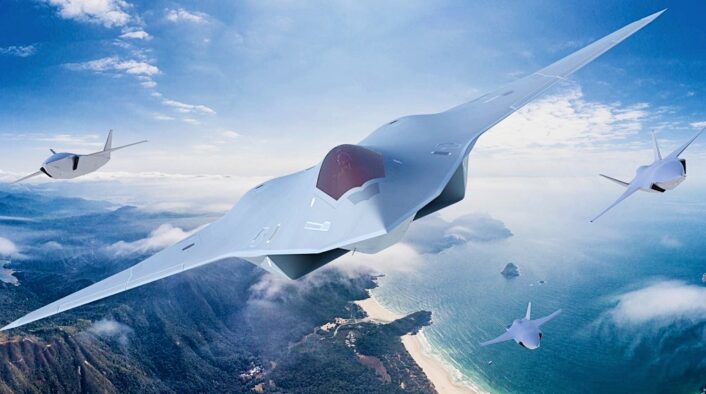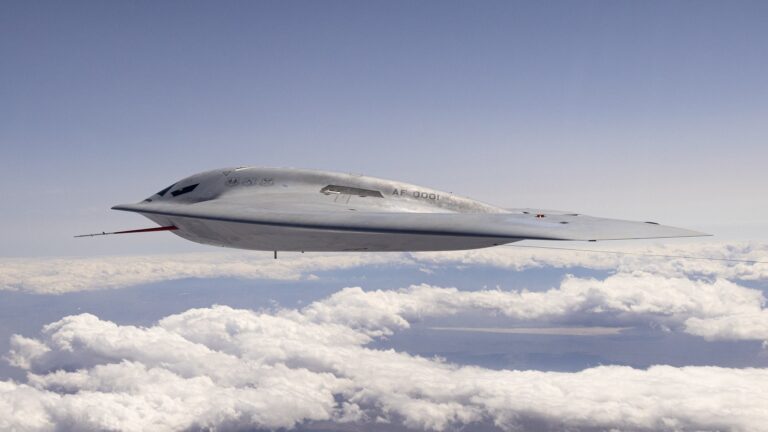Details about the new B-21 Low-Rate Initial Production contract have not been released, however Northrop Grumman said it had preliminary talks with the U.S. Air Force regarding a possible increase of the rate of production.
A year after the announcement of the first Low-Rate Initial Production contract for the B-21 Raider stealth bomber, Northrop Grumman has now announced that it has been recently awarded a second LRIP contract before the end of 2024. Additionally, the company had preliminary talks with the U.S. Air Force regarding a possible increase of the rate of production.
The developments were announced by Northrop Grumman’s CEO Kathy Warden during a recent earnings call. Among the updates, the company also shared that they are making progress with the work on the Sentinel intercontinental ballistic missile (ICBM) and the evaluation of a possible participation to the Next Generation Air Dominance (NGAD) program in future.
The B-21 production
Similarly to the first contract, awarded shortly after the beginning of the B-21’s flight testing, the details about the value of the contract and the number of aircraft were not released. Reports last year mentioned that the first contract could cover up to 21 aircraft, with at least six airframes in various stages of production at the time of the first flight in 2023.
The rate of production is another detail which is being kept under wraps, although some officials suggested it could be around seven aircraft per year. In fact, the Air Force deliberately chose to have a slow production for the B-21 to make it resilient to variations caused by cost overruns and budget caps, avoiding problems similar to the ones of the F-35’s production.
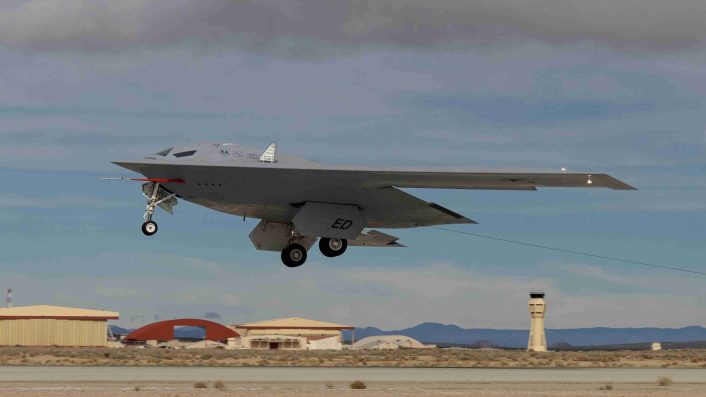

In a rare instance for a defense acquisition program, as reported in 2024 by Aviation Week, the B-21 budget for the first five production lots went from the $19.1 billion budgeted by the U.S. Air Force in 2023 to the $13.8 billion budgeted for 2025. The decrease amounts to a 28% discount, or $5.1 billion, for the same number of bombers to be acquired between 2023 and 2027.
This reduction of the price led to a first suggestion of a boost of the production as part of the negotiations for the future LRIP contracts. In fact, according to Northrop Grumman’s CEO Kathy Warden, the savings could allow to potentially add dozens of B-21s to the last three years of the LRIP phase.
In 2023 the Air Force said that the price of each aircraft has been renegotiated with Northrop Grumman, however it’s not clear how much this influenced the new budget, even if it was said that the price decreased. With the decrease of the cost, Aviation Week said the first 21 B-21s might now cost “only” $668 million per bomber.
It is still to be seen, however, if the saved funds will be used to boost the B-21’s production. Should the service decide to increase the number of the new bombers, Warden said last year that Northrop Grumman stands ready to increase B-21 production.
Former Air Force Secretary Frank Kendall also said he would accelerate the B-21’s production, if funds were available. However, he also noted that such acceleration would not be as straightforward as one would think and hinted at the preliminary talks with Northrop Grumman.
“If it’s affordable, that would make some sense,” said Kendall. “There’s only so much we can do about it in the near term, and the near term, for me, is the five-year plan. I have talked to industry about the possibility of higher rates than we currently have planned.”
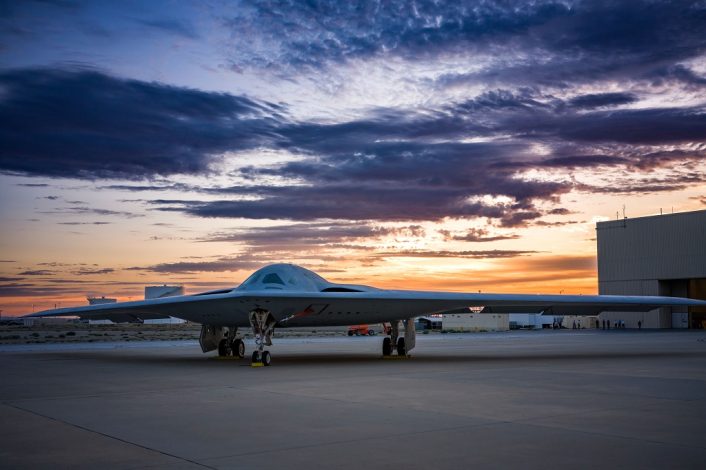

The Sentinel ICBM
Northrop Grumman is developing the LGM-35A Sentinel for the U.S. Air Force to replace the Cold War-era Minuteman ICBM. Sentinel is expected to cost around $130 billion and is currently being reviewed by the Pentagon to determine if it is necessary for national security, after a huge cost overruns of more than $40 billion.
Kendall said in Nov. 2023 that the Sentinel program’s struggles have made him “more nervous” than the B-21 Raider program. The Sentinel is “probably the biggest thing…with a daunting scale and complexity…that the Air Force has taken on,” Kendall said.
However, the Minuteman III is no longer a viable option, said the Air Force, and the service is working with Northrop Grumman to solve the issues. During the earnings call, Warden said the company is working through a restructuring process and meeting its obligations.
“We are working with the government on the restructure, but in the meantime, we are performing and meeting important milestones [on the] EMD contract,” said Warden. “The government has said that they project the restructure will take 18 to 24 months, and we’re still very much in that window … even though they have paused work on some small infrastructure efforts in the command and launch segment.”
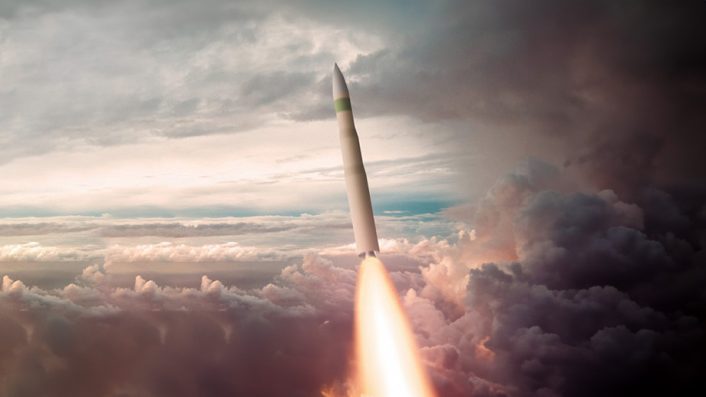

The NGAD program
The U.S. Air Force had announced early in December 2024 that the NGAD’s (Next Generation Air Dominance) ongoing review has concluded and that its fate now rests with the new Donald Trump administration. The study nevertheless supports the development of a manned, next-generation fighter, Breaking Defense reported.
While announcing the review in the middle of this year, the service extended the Technology Maturation and Risk Reduction contracts for the Boeing and Lockheed Martin teams, which are both expected to compete to become prime contractors. Northrop Grumman decided in 2023 to retire from the NGAD competition, but things might change again in future.
In fact, Warden mentioned the company might evaluate a return in the competition to become one of the prime contractors, saying “we’re certainly watching that space, and as we have described before, we believe we are well positioned to offer sixth-generation aircraft based on our successful B-21 performance and experience to date.”
Warden also admitted that the NGAD doesn’t figure into the company’s forecasts due to its uncertainty, however added that Northrop Grumman is contributing to the program through mission systems, even without being a prime contractor. At the same time, the company is competing to become a prime contractor for the Navy’s equivalent of NGAD, the F/A-XX.
